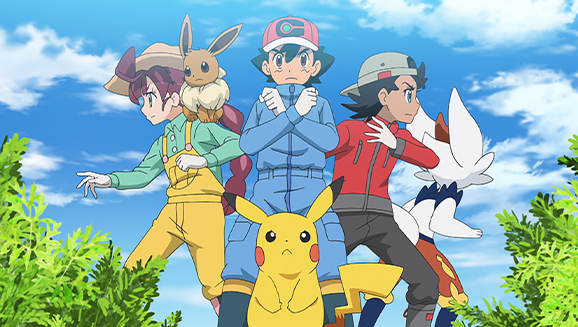Books: Anime — A History
October 20, 2023 · 0 comments
By Zoe Crombie.

Since its initial release in 2013, Jonathan Clements’ Anime: A History has served as a unique resource for anyone looking to contextualise their love of anime. The just-published new edition elucidates this complex history further with newly added sections on timely conversations around the medium.
Refreshingly, Clements’ book doesn’t adhere to the anime studies tendency of looking at the medium as birthed fully formed from Osamu Tezuka’s Astro Boy – in fact, the book doesn’t reach this landmark series until Chapter 6, beginning instead in the margins of magic lantern shows and animated advertisements, the primordial soup of anime’s origins. Additionally, Clements doesn’t solely consult Western sources, utilising a wide range of Japanese language texts. In this sense, Clements has thankfully done much of the hard work for other scholars and enthusiasts less well-versed in the language, though hopefully his methodology inspires more to undertake similar work beyond conventionally published English language sources.

Taking a historical approach to the study of anime, the book is broadly chronological, following on from the origins of Japanese animation to focus on significant moments in time for the medium, including the creation of the studio Toei Doga and the explosive influence of Pokémon. This doesn’t mean that the book is simply assembled, however; the thread that runs throughout is woven deftly, allowing for connections to be drawn all throughout in ways that feel entirely novel. Clements’ approach also prevents the book from falling into a common pitfall of writing on anime – starry-eyed fandom. While his appreciation of all kinds of Japanese animation is clear throughout, Anime: A History remains loyal to the promise of its title, not getting caught up in value judgements or allowing nostalgia to cloud conclusions. But make no mistake, this is a book written by a true aficionado, with reverence for anime and those who make it coming through poignantly in an added discussion (and memorialisation) of the Kyoto Animation tragedy of 2019.
The most significant contributions to this new edition are the three brand new chapters detailing anime consumption, production, and distribution in China, the industry response to the ‘otaku’ market, and contemporary anime distribution. Along with providing new insights based on the latest research and anime releases, these additions fill some existing ‘gaps’, giving a greater context to the importance of the fan market and how it feeds into the cycle of anime production and reception. Like the existing chapters, these new sections can be read independently (and would likely work wonderfully in a seminar context), but benefit from the context of the chronological thread woven throughout the entire book. For example, reading about wartime animator Tadahito Mochinaga’s experiences in chapter three provides a familiar figure to consider in the new chapter eleven, when he shows up as an eminence grise warning the Chinese of the temptations of commercial animation, and many other references to earlier chapters are helpfully signposted throughout for those who may be jumping between sections. The other major update to the original book is on an aesthetic level; the 2nd edition offers high quality colour images throughout that lend life and familiarity to many of the anime texts and topics discussed. Though these aren’t essential inclusions, it certainly adds a premium quality to an already valuable text.
Clements highlights in his introduction that this isn’t a book brimming with textual insights into the aesthetics, themes, and narratives of popular and niche anime. In this regard, you would do better consulting a text like Rayna Denison’s Anime: A Critical Introduction. Instead, what you’ll gain from Anime: A History is an understanding of the medium based on its industrial, economic, and political contexts: the companies making it, the people buying it, and the various bodies trying to control and profit from it. While it isn’t a book to buy for a ten-year-old who’s just discovered Naruto, it’s irreplaceable for a reader more experienced with anime looking to understand the world that surrounds their favourite film or series.
Anime: A History remains an essential text for anyone searching for a deeper understanding of why anime is the way it is, historically and commercially, and the latest edition does far more than simply updating the material; the changes constitute multiple novel areas of study. Whether you’re a university scholar writing a paper or an enthusiast wanting to know your Studio Chizu from your Studio Ponoc, this is an invaluable text sure to contain at least a few hidden gems of knowledge on the anime industry you’re unlikely to unearth elsewhere in Western writing.
Zoe Crombie is an associate lecturer and PhD candidate at Lancaster University working on Studio Ghibli. Anime: A History (2nd Edition) is out now from Bloomsbury.
Leave a Reply